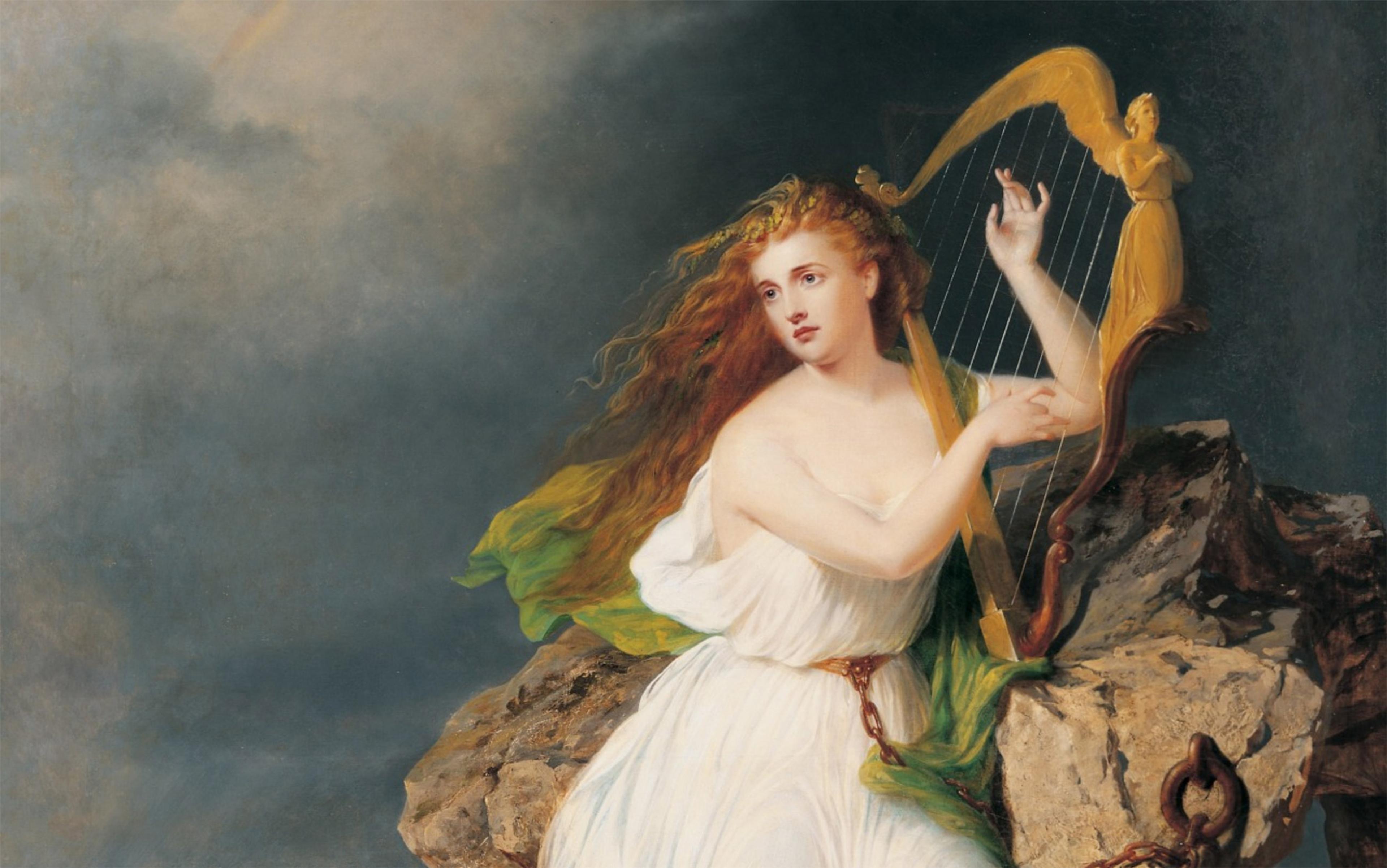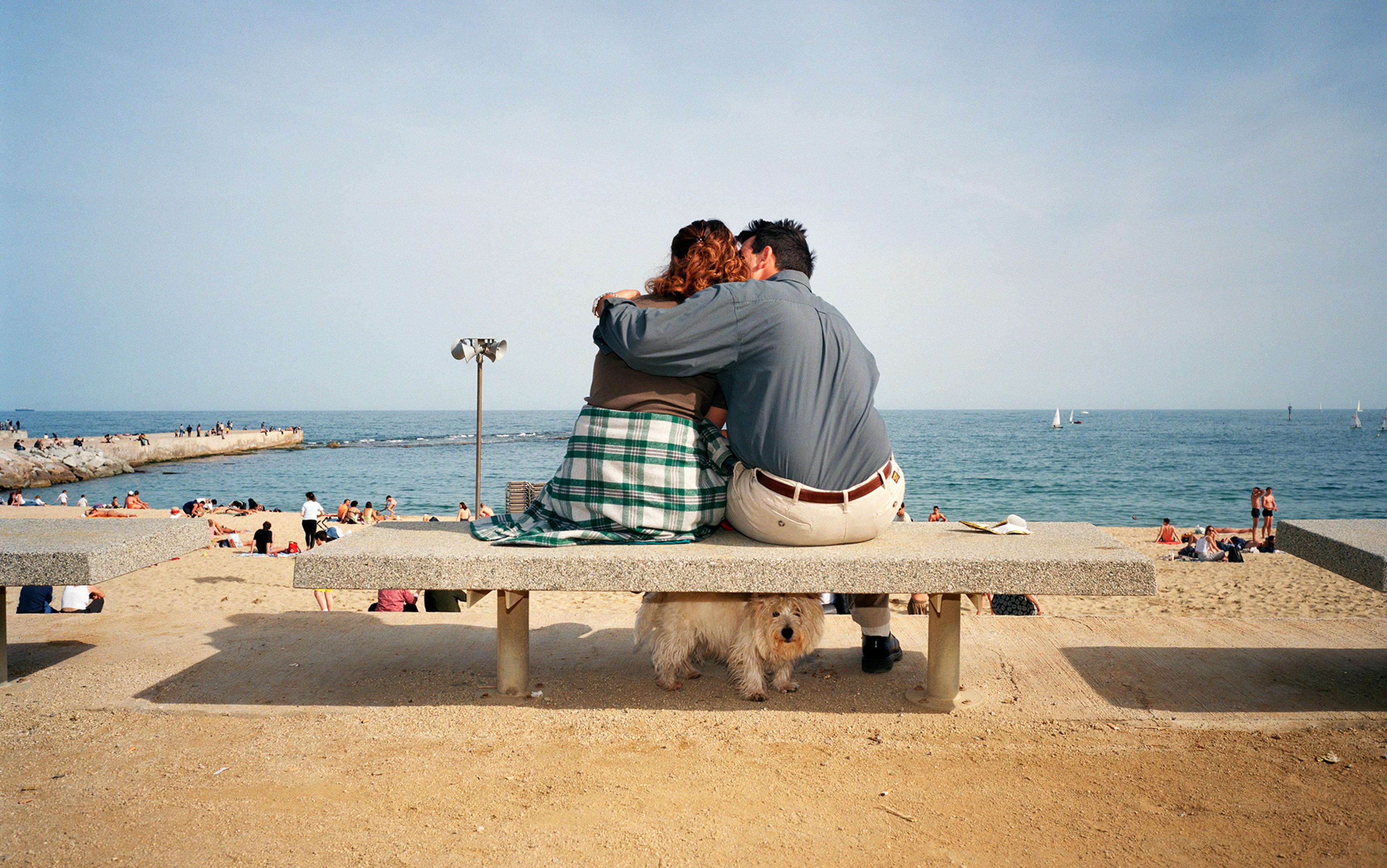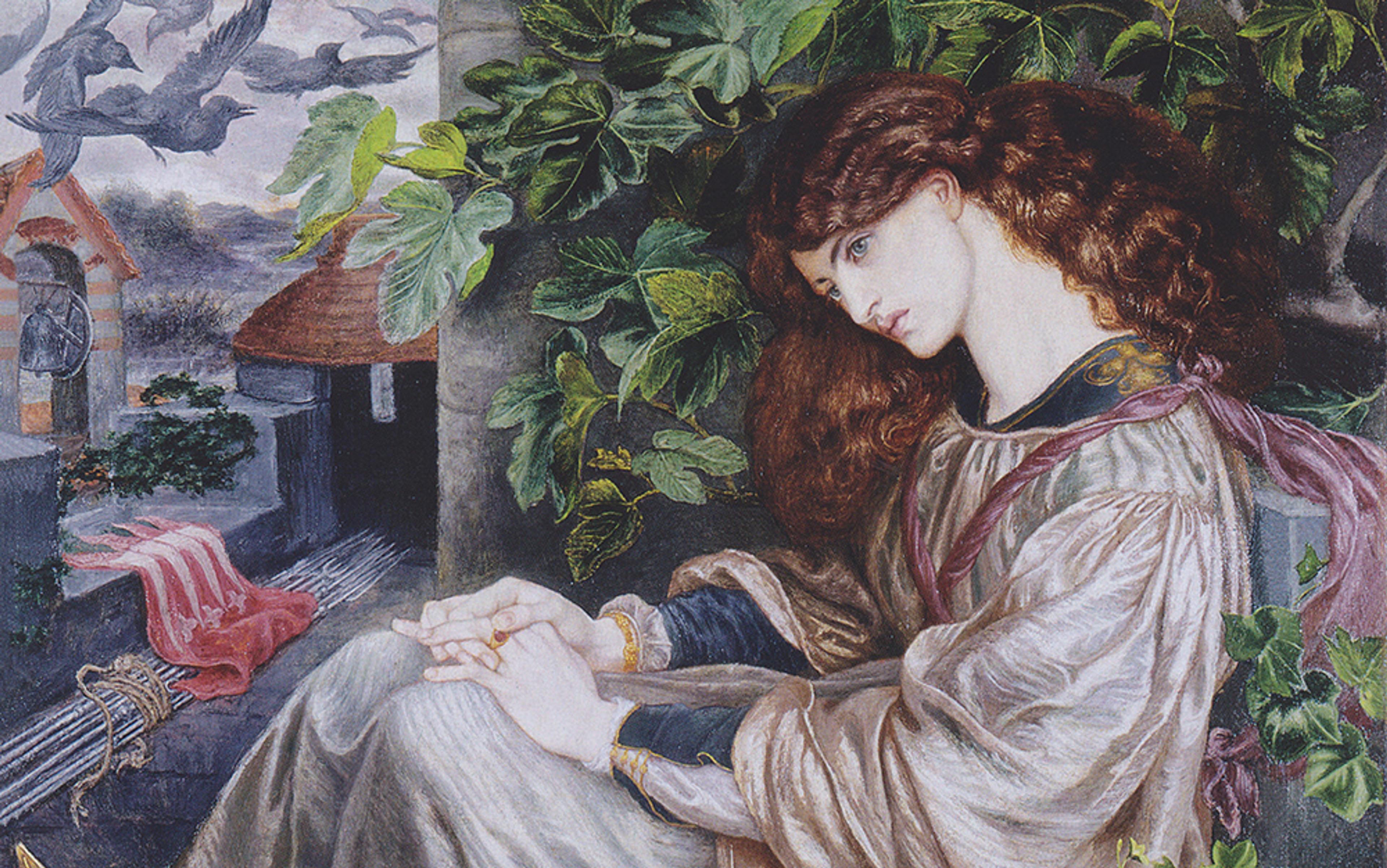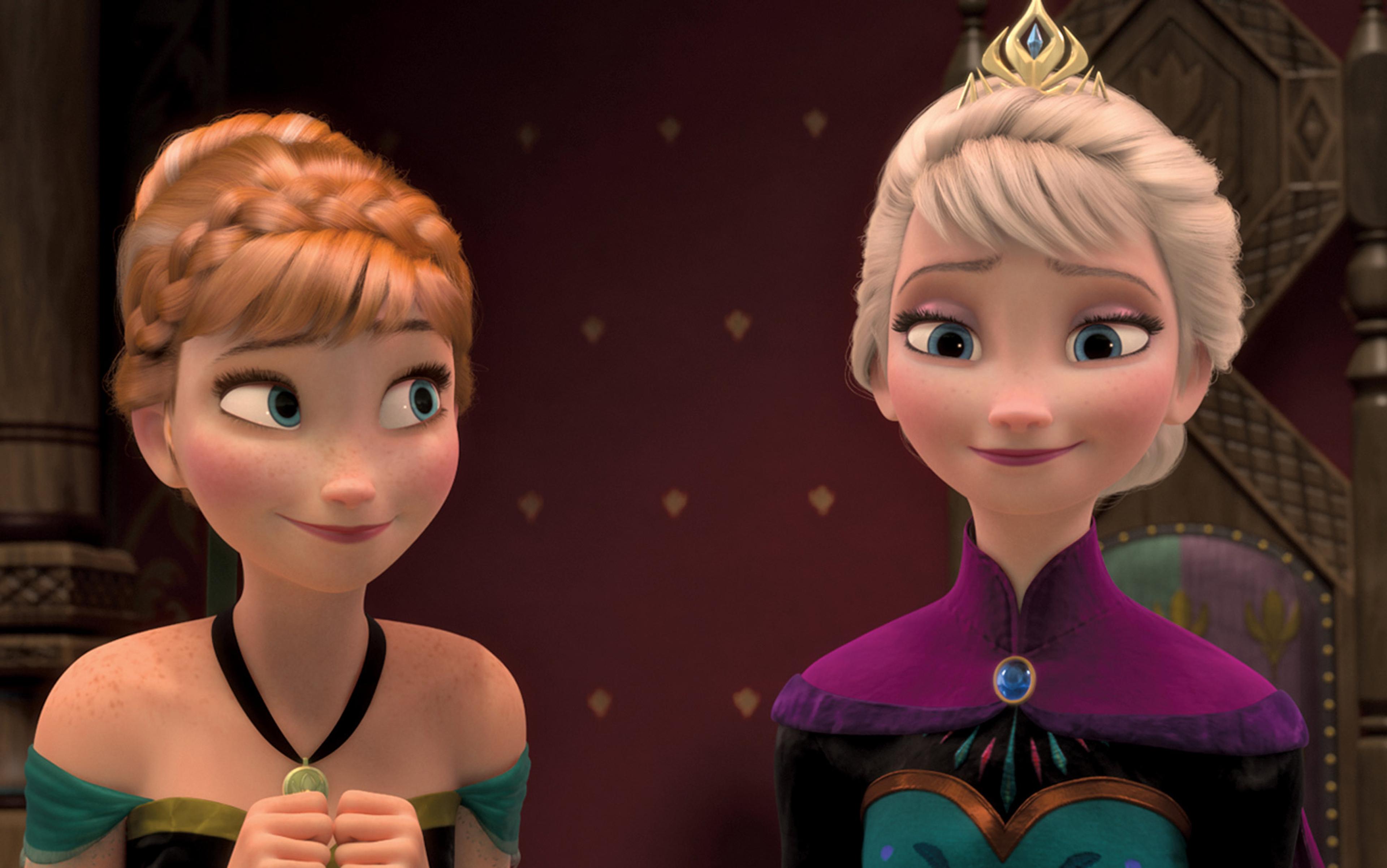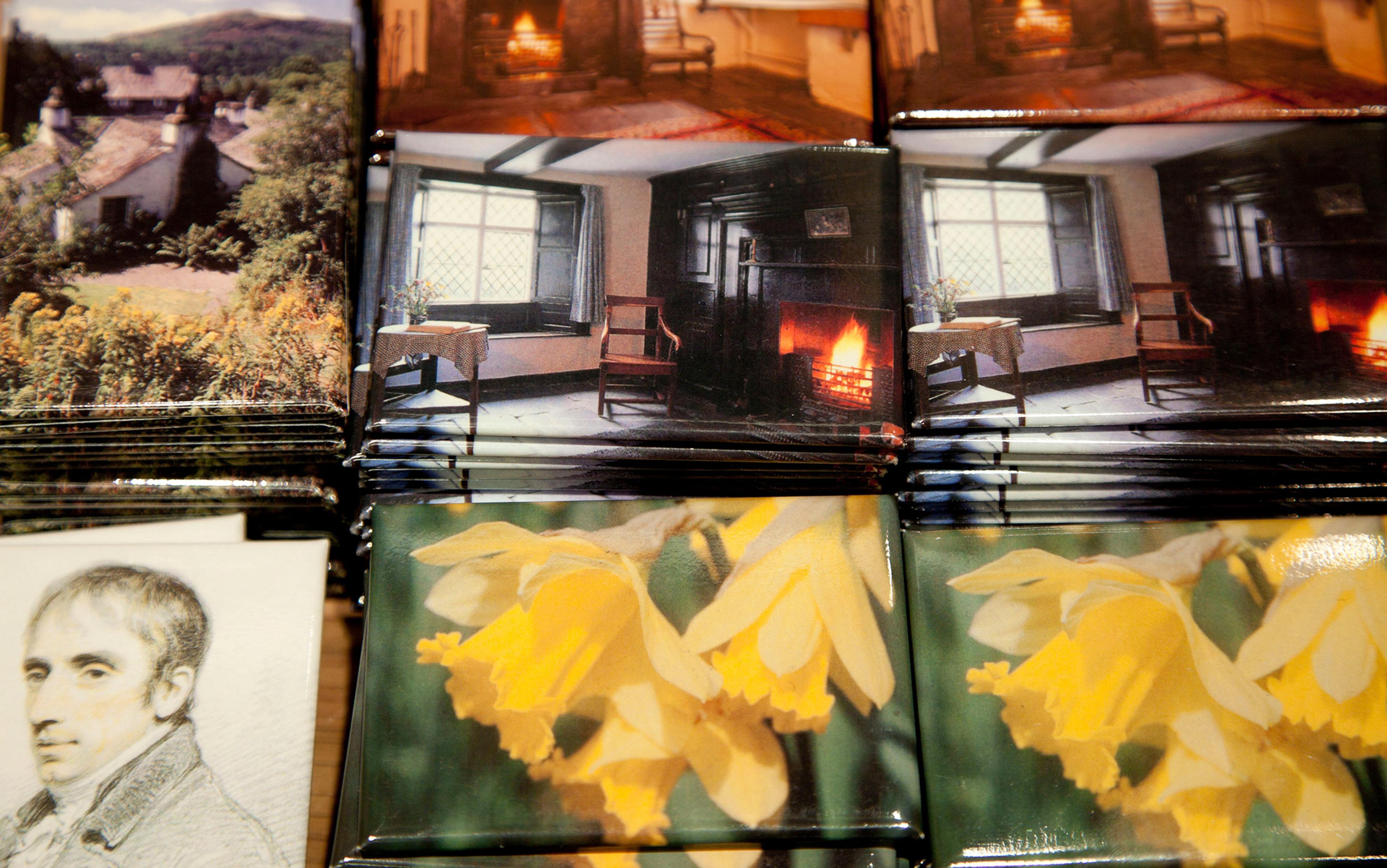When William Shakespeare wrote there ‘never was a story of more woe / than this of Juliet and her Romeo’, he had no idea of the uses and abuses his play would face in the coming centuries. Shakespeare’s tale of star-crossed lovers has been woefully misappropriated for wildly different scenarios, from selling us balconies as the very emblem of romance (there’s no balcony in Shakespeare’s play) to serving as a leitmotif for the Israel-Palestine conflict. In 1990, the ever-controversial author Lionel Shriver lamented how often the narrative of doomed lovers cropped up in novels about the Northern Ireland conflict, suggesting that the ‘Troubles Writer … compulsively Romeo-and-Juliets his characters across the sectarian divide’.
Shriver might be right about the writerly compulsion to endlessly rehash the story of forbidden love, but the Irish history of this influential metaphor predates Shakespeare’s 16th-century play. In Ireland, such ‘romance’ narratives of lovers from opposing sides have historically been used to describe a political relationship between nations, often to gloss over the violence of British colonialism, and the afterlives of this usage echo through centuries of literature and culture. These afterlives don’t just crop up in fiction, either. People in the North still live intimately, cheek by jowl, with this imperial past. Here, I want to explore what is at stake in the messiness of these love stories: as political allegory, colonial metaphor, and, for some, daily life. We’ve been telling drastically simplified versions of the same story for hundreds of years, but why has no one stopped to ask why?
During the 30-year conflict – euphemistically known as ‘the Troubles’ (1968-98) – in the North of the island of Ireland, novelists, poets, the BBC, playwrights and filmmakers insistently turned to the narrative of lovers from across the supposed divide. Perhaps the most popular example of this is Joan Lingard’s Kevin and Sadie series, consisting of five young adult (YA) novels published between 1970 and 1976. In charting the friendship, courtship and eventual marriage of Catholic Kevin and Protestant Sadie, Lingard gave her young readers a window into the impact of the Troubles on working-class families. Lingard’s second novel in the series, Across the Barricades (1972), was widely read across Ireland and became a staple on school curriculums. It was found in classrooms across Northern Ireland but also in the West of Scotland and even in a divided Germany. The appeal of stories such as these is undeniable and enduring, and they’ve continued to flourish long beyond the conflict. The most recent, Sue Divin’s Guard Your Heart (2021), is another YA love story about a Catholic (Aidan) and a Protestant (Iona), both born in Derry on 10 April 1998: the day of the Good Friday, or Belfast, Agreement.
But let’s get back to Shriver labelling these tales as Irish versions of Romeo and Juliet, thereby misrepresenting swathes of literary culture and erasing the specific political contexts that shape these narratives. We’ve got to remember that these Irish lovers are decidedly not star-crossed: it isn’t fate or bad luck that keeps them apart. Genuine union is curtailed by an environment marked by bigotry, distrust and division, because the difficulties these Northern lovers face are acutely political. It’s not the ‘yoke of inauspicious stars’ that stops romance in its tracks – it’s the legacy of violent colonial conflict.
My colleague Ramona Wray has written about her experiences of teaching Shakespeare’s Romeo and Juliet to undergraduates in Belfast. She notes that the play didn’t ring true for many of her students with first-hand experience of the complicated realities of growing up in a society still marked by division. To them, the ‘ancient grudge’ dividing Montagues from Capulets seemed implausibly lacking in meaning, context or history. Romeo and Juliet wouldn’t have had to negotiate which religion they would baptise their firstborn in, or whether they might spend their summers avoiding or attending the bonfires of Marching Season. The supposed stereotype may or may not be a facile cliché, but either way it demands interrogation.
In the YA novels I’ve cited, the young lovers come from opposite sides of the North’s two dominant communities; communities that are mapped on to ethnopolitical identities that are strongly aligned to religious identities. There’s the largely Catholic Nationalist Republican community, whose members identify as Irish, and the predominantly Protestant Unionist Loyalist community, whose members identify as British. Like the Troubles Thriller, a genre that often flattened the desperately uneven politics of the conflict to a simplistic game of cat and mouse between paramilitaries, the ‘love across the divide’ tale is ubiquitous in stories about the North. And, like the Troubles Thriller again, these love stories were soon thought of, by cultural critics at least, as the lowest of literary genres: Troubles Trash.
It’s been more than 20 years since the Good Friday Agreement brokered a precarious peace for the North, but the potential for disorder is never far from the surface. We saw this in April 2021, when serious unrest crackled within loyalist communities across the North. Street violence erupted against the Police Service of Northern Ireland and in community interface areas, mostly clustered around Belfast’s ironically named ‘Peace Walls’. The factors that led to this were various and much debated but they owed as much to localised criminal activity as to politics and the widely cited dissatisfaction with the ‘Northern Ireland Protocol’. This legislation, generated by Brexit, is viewed by many of those who wish to remain a part of the UK as creating an economic block between Northern Ireland and Britain. While there’s a performative element to these sporadic outbreaks of violence (the Los Angeles-based artist and filmmaker Mariah Garnett talks of the almost ritualistic performances for the media), to underestimate the situation in the North is dangerously foolish.
The roots of this antipathy between communities, styled as a bad romance, goes back centuries. Curiously, in the popular imagination, a series of ambiguous medieval couplings from the 12th century are thought to be intimately related to the Anglo-Norman conquest of Ireland. I use the ambivalent term ‘couplings’ because it’s difficult to find language to describe these encounters when the issue of consent is so fraught. Most important is the marriage between an Anglo-Norman Earl, Richard FitzGilbert de Clare (or Strongbow), and an Irish woman, Aoife MacMurchada. Aoife’s father Diarmait MacMurchada arranged this marriage to compensate for his own romantic transgressions. He’d been dispossessed of his kingdom after abducting Derbforgaill, the wife of a fellow provincial Irish king, Tigernán Ua Ruairc, and, in dire straits, he promised Aoife in marriage to Strongbow – plus the kingdom of Leinster – in exchange for Strongbow’s military assistance. After MacMurchada’s death, a second, more powerful and ultimately more successful Anglo-Norman invasion of Ireland took place. And so, a story of ‘romantic’ union opened the door to the colonisation of Ireland.
This marriage has become the stuff of myth, so inexhaustibly referenced, recycled and retold that it’s easy to forget that Strongbow and Aoife were real people. What’s more, we should remember that marriages between ‘English’ and ‘Irish’ would be legislated against in 1366, when the ‘Statutes of Kilkenny’ made such unions illegal. Strongbow and Aoife’s marriage was not a metaphor but a lived reality. Frequently invoked as an origin myth about the complex, antagonistic relationship between Ireland and England, it gave rise to the thorny idea that this relationship resembled nothing so much as a heterosexual partnering. As the metaphor morphs through history, the Anglo-Norman man becomes English, then Anglo-Irish or British. In the late 20th century, the motif undergoes yet another transformation into the ‘Troubled’ tale of illicit love. The ‘union’ itself is changeable. It could be an arranged marriage, a reconciliatory romance or, as in selected poems by Seamus Heaney, a rape. Engaging with the cultural history of this motif is laden with difficulties when the partners, and the nature of their union, are always moving parts. While the idea of heterosexual union remains paramount, the variations of the tale are revealing and highly political.
The history of European imperial expansion tells us that using gendered language to describe would-be, and actual, colonial territories is not unique to Ireland. In the drawing ‘Allegory of America’ (c1587-89) by the Flemish artist Jan van der Straet, the Florentine ‘explorer’ Amerigo Vespucci’s ‘discovery’ of the Americas is personified as an encounter between him and a naked Indigenous woman, depicted half-reclining in a hammock. The drawing is an allegory for colonial ‘discovery’ but we should never forget the real violence that this masks. Rape and other coercive encounters, including marriage, were used to differing degrees amid the terror and brutality that characterised European expansion across the globe.
The frame of reference for the convoluted entanglement between Ireland and England is familial and domestic
There’s also a lengthy history of using the motif of ‘romance’ – however euphemistic the term – to describe the relationship between Europe’s imperial nations and those they sought to dominate. It’s a deeply manipulative way of papering over the horrors of colonial violence and transplanting Western ideas about gender. This is the context in which Ireland emerged as a handmaid to England. From the late 16th century onwards, Ireland was increasingly depicted as a young, vulnerable woman in need of some English husbandry. In an extract from Luke Gernon’s ‘A Discourse on Ireland’ (1620), the English-born judge describes Ireland as ‘a young wench that hath the green sickness for want of occupying’, and as a ‘fertile … open harbour’ who ‘wants a husband’. Note Gernon’s explicit feminisation of Irish topography and the emphasis he placed on the need for sexual penetration, or Ireland’s ‘want of occupying’, by an English husband.
The violent undercurrent of such descriptions is made strikingly clear in the work of contemporary Irish poets such as Heaney and Medbh McGuckian. Heaney’s most explicit meditation on the theme is at the heart of several poems from his controversial collection, North (1975). In particular, ‘Act of Union’ and ‘Ocean’s Love to Ireland’ contain careful allusions to imperial romances by the 16th-century colonialist and favourite of Queen Elizabeth I, Walter Raleigh. Heaney writes of an ‘imperially / Male’ England and a violated woman, Ireland, whose forced union creates an illegitimate offspring that, Heaney contentiously suggests, is Northern Ireland. Parturition is his chosen metaphor for the partition of Ireland and for the chaotic and traumatic birth of this Northern statelet. Once again, the frame of reference when talking about the convoluted entanglement between Ireland and England is insistently familial and domestic.
But I’m getting ahead of myself in thinking about the breakup between Ireland and Britain, and the breaking up of Ireland itself, before discussing their union. The Act of Union that united the Parliaments of the two islands into the United Kingdom of Great Britain and Ireland came into effect in 1801. Over and again, it was likened to a marriage, with Ireland styled as wife to a British husband. This idea was pervasive and reiterated across satirical cartoons, political pamphlets and parliamentary speeches. This political marriage also led to the rise of a new type of novel, which literary critics and cultural historians today refer to as ‘National Tales’. The coinage derives from the novel The Wild Irish Girl; a National Tale (1806) by Sydney Owenson (Lady Morgan).
National Tales have much in common with other genres dating to the turn of the 19th century, such as the historical romance and the Gothic novel. However, what makes National Tales distinctive, as the scholar Katie Trumpener writes in Bardic Nationalism (1997), is a ‘national marriage plot’ between an Anglo-Irish or British man and an Irish woman. Once more, the narrative of romantic union between an Irish woman and her British husband is tied to the national politics of the two islands. Gernon, who wrote that queasy description of Irish geography, was certainly not the only English, or even European, imperialist who thought about Ireland and its people in a feminised vein. National Tales expanded and cemented centuries of gendered rhetoric about Ireland and the Irish. The romantic heroines of the National Tales were Irish women who would hopefully become obedient wives to their British husbands, suggesting that the potentially subversive quality of the Irish could be neutralised through matrimonial (or political) union.
It is a feminist truism to claim that the personal is always political, yet, through the National Tales, the ostensibly male world of politics morphs into the domestic space of romance and literary fiction. Political instability gets transmuted into the most intimate of unions through the most domestic of cultural forms: the novel. In the Western world, the novel is the vehicle that we most associate with private life. Reading the novel is an individual pursuit and one that, unlike, say, watching a play, often takes place in the putatively private space of the home. The novel is indelibly aligned with the marriage plot and women readers. These National Tales might be read as part of an attempt to contain the public and political matter of the loaded ‘Irish Question’ to the pages of novels about marriage, read in the privacy of the home.
Political unrest continued to foment in Ireland throughout the 19th century, leading to notably disastrous uprisings in 1803, 1848 and 1867 – the latter two fuelled, at least in part, by the devastation and horror of the Famine (1845-51). This political fervour peaked with the Easter Rising of 1916, followed by the Irish War of Independence (1919-21). The laborious, protracted and incendiary partition of the island, effective from 1921, was immediately followed by civil war (1922-23). This tumultuous time in Irish history, known as the Irish Revolution, once again saw writers turn to the love story to make sense of what they were living through. The cultural historian Síobhra Aiken explained to me that ‘Veterans of the Irish Revolution often turned to romance (or failed romance) in both first-hand and fictional writings as a means to convey the trauma of their wartime experience. The trope of the love triangle was widely employed to tease out the competing allegiances of civil war.’ Far from being apolitical, the love story became a key genre that mined the compromised and contradictory terrain of Anglo-Irish history, where sexual and emotional commitments can utterly compromise one’s politics.
Starting in the latter decades of the 20th century, the BBC has demonstrated a deep investment in these narratives of lovers from opposing sides, dramatising numerous novels for television, including Robert McLiam Wilson’s Eureka Street (1996) in 1999, and Eugene McCabe’s Death and Nightingales (1992) in 2018. The BBC is also fond of creating Northern characters whose parents are in ‘mixed marriages’, such as the superintendent Ted Hastings from Line of Duty (2012-), or the serial killer Paul (Peter) Spector from The Fall (2013-16). This reveal is often cynically used to raise audiences’ suspicions about a character: even if the Northern conflict remains a hazy backstory, the mention of ‘mixed marriages’ reminds audiences what is at stake in these highly politicised acts of union. The BBC’s reliance on the Troubles Thriller, and the story of antagonistic lovers, occludes any chance of nuance, while turning the statelet into a place overwhelmingly associated with death and sex – or violence and desire. Efforts to elevate and reinstate other stories from the statelet have become a crucial redress in work by Northern writers and critics including Lucy Caldwell, Caroline Magennis and Eli Davies.
Using the love story to make sense of the past has a sinister history
Against this archaic allegorical union is the reality of actual mixed marriage in Ireland: something that, for many people, has defined their lives. Our obsession with the tragedy of these fictional narratives depletes the lived stories of people who were or are in mixed relationships, and navigating a divided society that is all too real. The North still has a segregated school system, meaning that the majority of Catholic and Protestant children are educated separately, further reinforcing divisions between the two dominant communities. The first integrated school, aiming to bring together communities in the classroom, did not open until 1981 and fewer than 8 per cent of children attend integrated schools. It is perhaps no surprise that, in these popular love stories, the emotional optimism of desire between individuals is almost never enough: instead, the Happy Ever After of Romance proper is almost habitually elusive.
There’s so much about the relationship between Ireland and Britain that sounds like a bad romance, including gaslighting the people in the North about their experiences during the Troubles. But using the love story to make sense of the past has a sinister history. I’m not saying these stories are perfect – and why we keep returning to this narrative needs to be probed – yet there is some serious meat to them that academics have tended to overlook because they are love stories.
It’s because romance isn’t taken seriously as a genre that we find ourselves in a bind. Using the love story as an analogy for a political relationship between nations seems like an attempt to relegate it to the shadowy realms of the domestic, a private space we don’t probe too closely. But, on the flipside, because we don’t take romance seriously, we’re also reluctant to think about these fictional love stories as political. It’s hard not to wonder whether these romances are sidelined by academics because they are usually concerned with heterosexual cis-gendered characters. But there is absolutely a politics to heterosexuality, despite the privileged invisibility that its apparent ‘universality’ affords it. Compulsory heterosexuality and heteronormativity are things we need to question when it comes to Ireland, and especially the North, where the road to legalising same-sex marriage has been notoriously fraught, and came into effect only in 2020.
What would happen if we did take romance seriously? We might retire the lazy metaphors for starters: Brexit, for example, might not be a divorce. We might also ask why there is a relative quiet around mixed marriage in Ireland. We might push back against the general unspoken sense that histories of gender, sexuality and family are not the concern of real history. We might read differently. These romances have suffered for want of properly intimate readings, with a granular focus. Joan Didion’s aphorism that ‘we tell ourselves stories in order to live’ endures because we do use stories to help us make sense of the chaos and mess of life. Equally, we learn how to live – how to feel – through stories. Our lives are figured and contextualised in narrative terms, drawing on ideas and stories we absorb through culture. This is as true of love as anything else; love is, as Roland Barthes writes in A Lover’s Discourse (1977), ‘born of literature, able to speak only with the help of its worn codes’.
For Ireland, north and south, and its eastern neighbour Britain, the ‘worn codes’ of the love story shape the history of their entanglements – though we’re far from making sense of these. But if we took the leap and committed to seeing these love stories as something worth thinking about, we might begin to flesh out how national stories and daily lives intersect. We could start by exploring an alternative narrative that enriches and complicates our understanding of the relationship between Britain and Ireland, and the story of Ireland itself.
